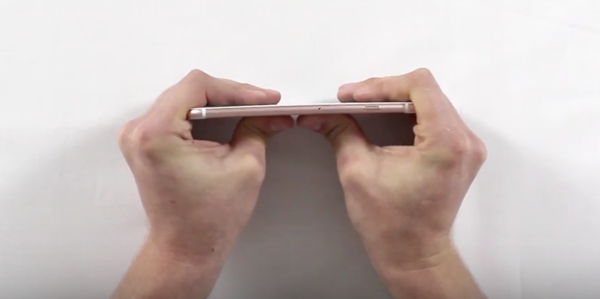What’s the first thing that you do when you are lucky enough to live in Australia and can get your hands on Apple’s new iPhone 6s Plus well before the rest of the launch countries? You grab your video camera, unbox the device and record a video of yourself trying your very best to bend that brand new shiny hardware, of course. That’s exactly what Christian from YouTube channel FoneFox did when he got his new iPhone 6s Plus. All part of his efforts to determine whether or not the structural changes to the new iPhone prevent last year’s bendgate scandal from reoccurring.
You probably remember the scandal that engulfed Apple’s iPhone 6 and 6 Plus twelve months ago and detracted hugely from the initial excitement that surrounded the launch of the hardware. Consumers were able to apply pressure to certain parts of the iPhone 6 Plus, resulting in a very distinct and noticeable bend occurring. As part of the iPhone 6s and iPhone 6s Plus design, Apple has made a number a number of changes, including increasing the thickness by 0.2 mm, as well as using new 7000 series aluminium during the manufacturing process.

But have those changes made a difference, or have they been in vain? In order to keep things as scientific as possible, Christian from FoneFox attempts to subject the iPhone 6s Plus to the same bending process that was widely reported to cause damage to last year’s iPhone 6 Plus. The video clearly shows that when a certain level of pressure is applied to either end of the phone it starts to slightly bend in the middle. Additional pressure causes additional bow in the hardware. Of course, any reasonable individual would expect that to happen when purposely trying to bend a device that’s 7.3 mm thick. When the pressure is released the device is rigid enough to immediately go back to its original form.
An additional test using two individuals applying pressure to the device did cause a bend that wouldn’t correct itself when the pressure was removed. But once again, Apple does not build these things to be indestructible, meaning that it’s reasonable to expect this type of malformation under these circumstances.
The test proves however that the changes made to the structural DNA of the new iPhones will prevent any accidental bend from happening in real world usage.
Check out the bend video yourself and see what you think? Was bendgate an issue for you, or was it blown out of all proportion?
You can follow us on Twitter, add us to your circle on Google+ or like our Facebook page to keep yourself updated on all the latest from Microsoft, Google, Apple and the Web.
